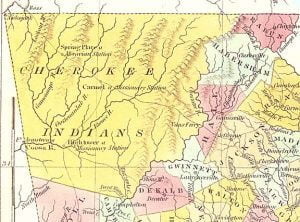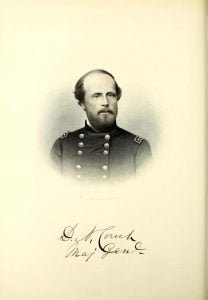Governor Houston at His Trading Post on the Verdigris
In February, 1828, the vanguard of Creek immigrants arrived at the Creek Agency on the Verdigris, in charge of Colonel Brearley, and they and the following members of the McIntosh party were located on a section of land that the Government promised in the treaty of 1826 to purchase for them. By the treaty of May 6, 1828, the Government assigned the Cherokee a great tract of land, to which they at once began to remove from their homes in Arkansas. The movement had been under way for some months when there appeared among the Indians the remarkable figure of Samuel Houston. The biographers of Houston have told the world next to nothing of his sojourn of three or four years in the Indian country, an interesting period when he was changing the entire course of his life and preparing for the part he was to play in the drama of Texas.




